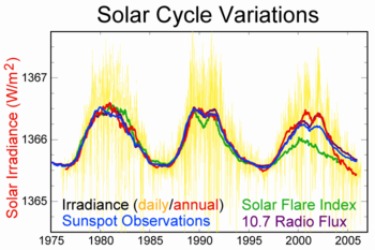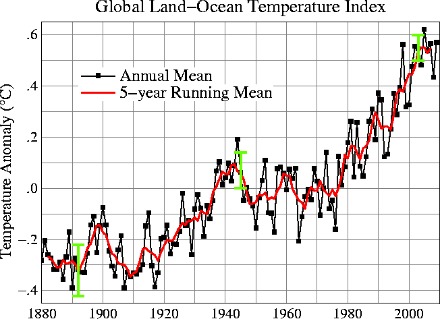Images from a NASA satellite show one of the largest sunspots seen in years and has solar astronomers watching closely for more indications the sun is entering an unusually active phase. One which could potentially have a dramatic effect here on earth:
(Wired News) NASA’s Solar Dynamics Observatory has spotted one of the largest new sunspots to appear on the surface of the sun in years. It is nearly 25,000 miles wide, or more than three times larger than the Earth. The enormous sunspot was seen rotating over the sun’s northeastern limb on Nov. 3.
Our lovable yellow star goes through cycles just like everything else in nature and one of the best studied takes about 21 to 22 years to complete. Every decade or so the magnetic fields around and inside of our star flip, north becomes south and vice-versa (The same phenomenon happens on earth, except it takes thousands of years to complete). During this time the sun’s brightness changes slightly as it goes from quiet to active and back again. In fact the solar cycle was first determined in the 19th century by observing the size and frequency of sunspots. Solar astronomers still do that, and combined with other, more modern observations like flares, they track solar events closely. That’s how we know the sun began its usual decline in the middle of the last decade and settled into a quiet phase.
But the cycles are not perfectly periodic, some active phases are really active and some quiet phases are deeper than others. Big active phases are associated with coronal mass ejections, more sunspots, and slightly increased irradiance. Mass ejections can lead to all kinds of problems on earth. If something like the Carrington Event of 1859 were to occur today, the consequences to our modern energy and communication networks could be staggering. The irradiance delta is small, about one Watt per square meter out of about 1366 W/m^2, but that one Watt can have a measurable effect over time. Some climate scientists theorize that increased irradiance, combined with growing atmospheric greenhouse gases, help explain the decadel look to some of the ups and downs in the recent global temperature record below, where the global temperature maxima lag the solar maxima similar to the way day time highs happen well after 12 noon.
In 2007 – 2008 the sun settled into an unusually deep minimum. Astronomers predicted with confidence it would emerge in three or four years, and that’s exactly what this giant sunspot and other observations indicate. What remains to be seen is just how active this coming maximum will be and what effect, if any, it has on our fragile networks and global climate.




A little Clyrasyl will clear that acne right up. ^_^
It’s possible that one day we will have that ability. Imagine the consequences of being able to affect or even control the sun.
I’m watching the entire SG-1 series and in a few of the later episodes, people keep mentioning how bad-ass Carter is.
“You blow up one little sun and everyone thinks you’re cool.”
Regarding your title: it’s a solar minimum. “Minima” is plural.
(This has been brought to my attention via email. Hey, FTB readers are sticklers for accuracy and that’s a good thing! Alas, my editing functions are nerfed and the typo may stand for a bit longer — DS)